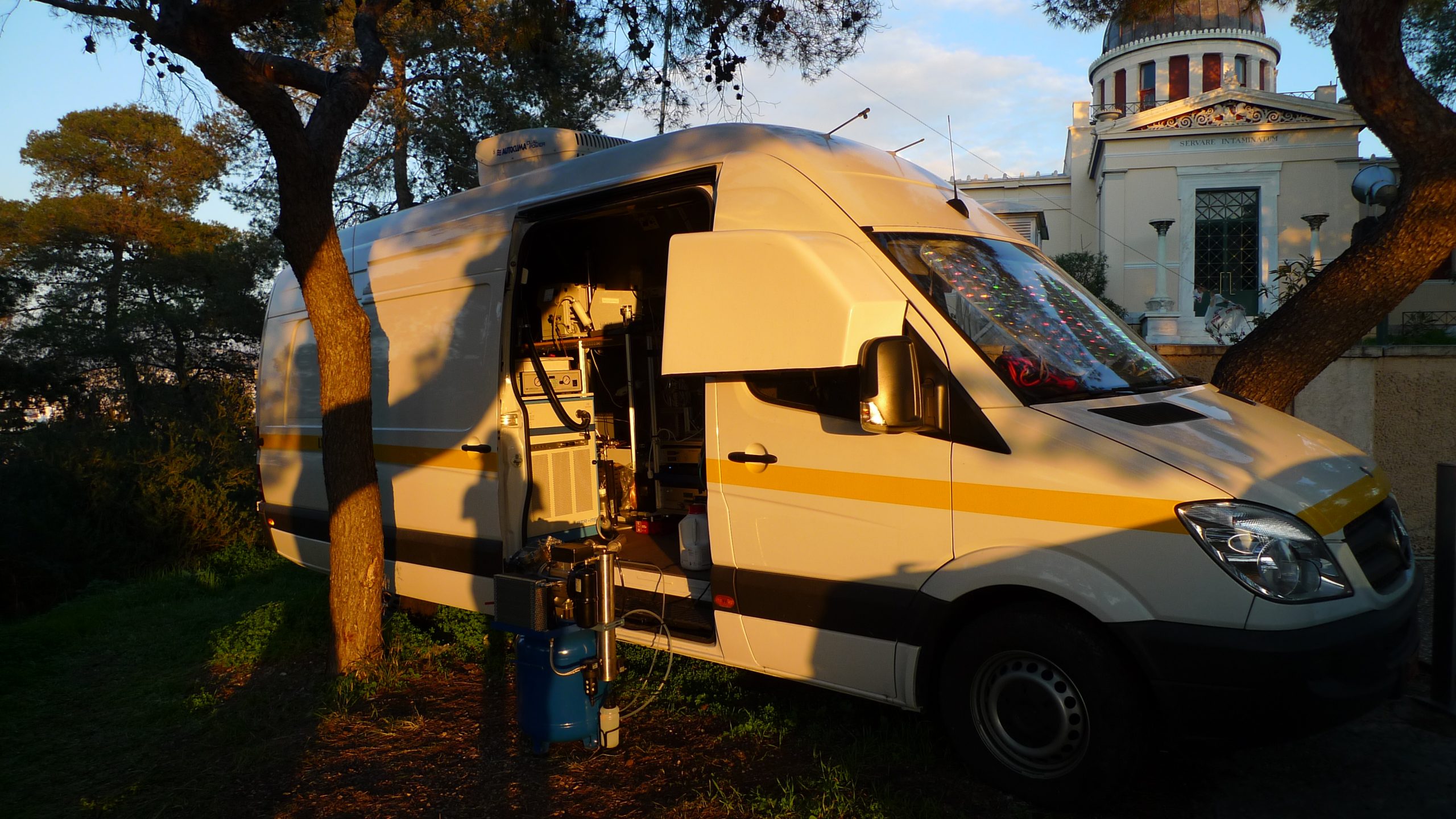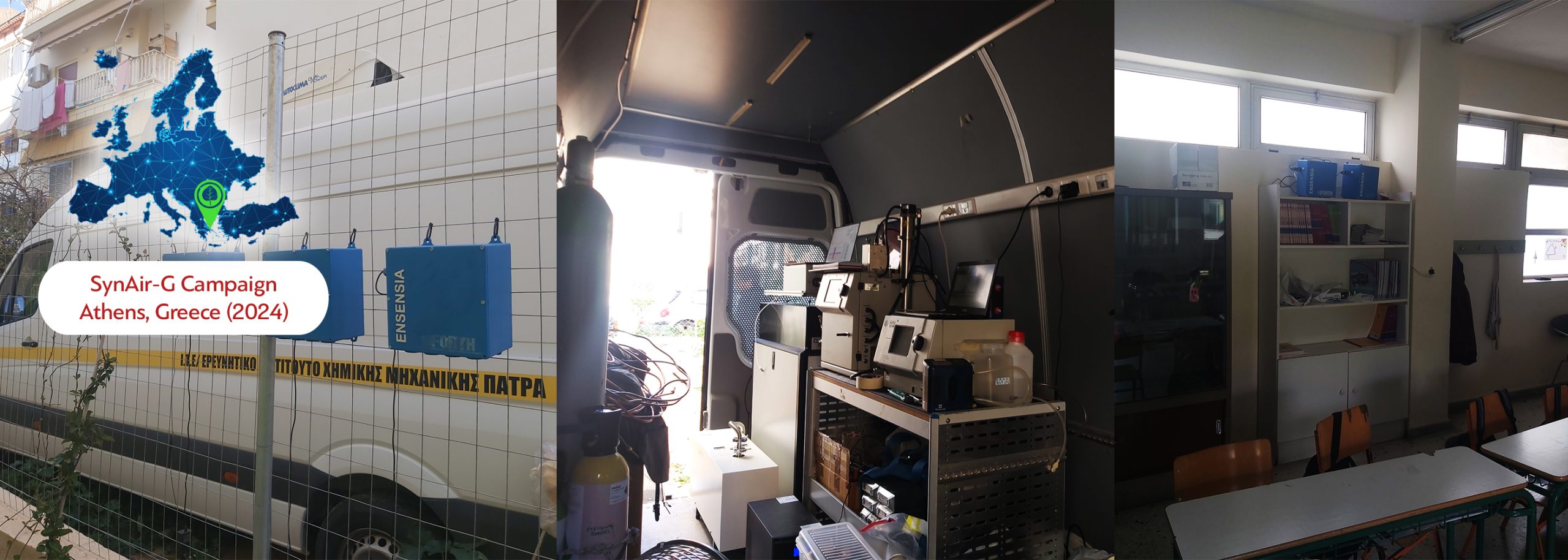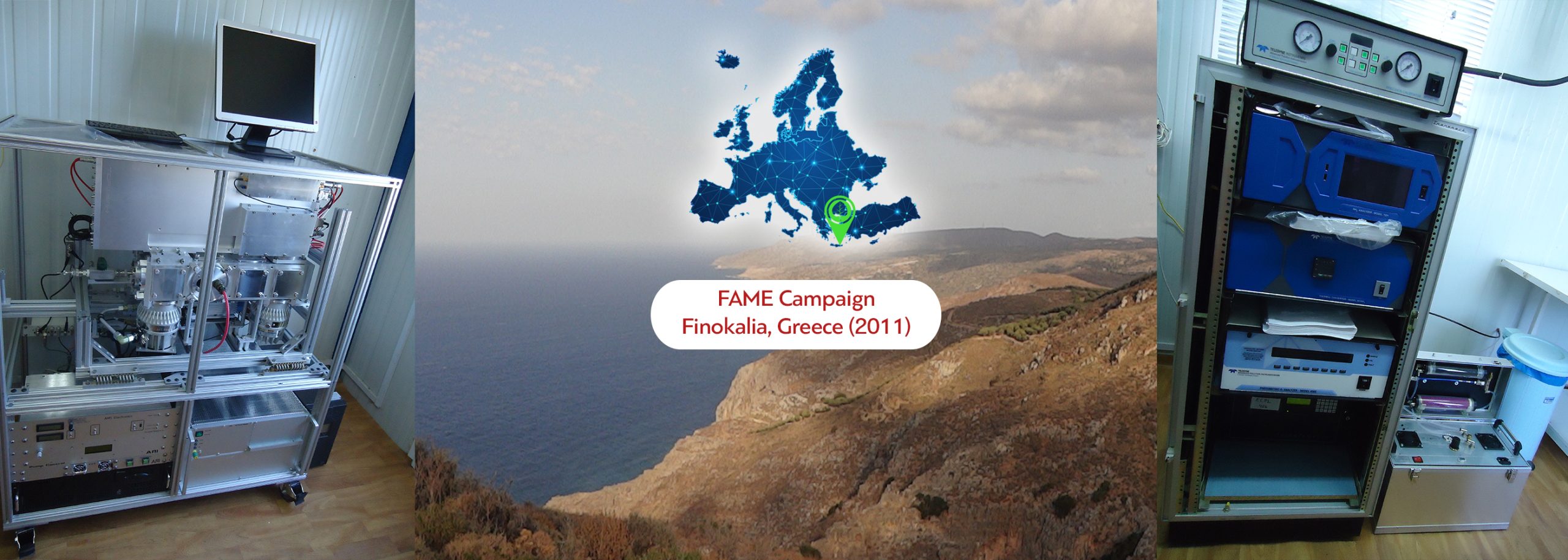Laboratories
| General information | |
| Access mode | Physical access |
| Infrastructure name and acronym | FORTH Atmospheric Simulation Chamber (FORTH-ASC) |
| Photos |  |
| Location | 38.297504 N; 21.808678 E Patras, Greece |
| Website | Laqs.iceht.forth.gr |
| Legal name of organisation operating the infrastructure | Foundation for Research and Technology Hellas, Institute of Chemical Engineering Sciences (FORTH/ICEHT) |
| Description of the infrastructure | |
| Brief general description of the infrastructure to which access is offered | Indoor chamber: 103 Teflon reactor in 30m3 temperature controlled UV-equipped room. plus two 2m3 Teflon reactors inside UV-equipped enclosure. |
| Services currently offered by the infrastructure and its research environment | – Testing/intercomparisons of new instruments. |
| Modalities of access and support offered under EUROCHAMP-2020 | |
| Typical duration of work | Between 2 and 4 weeks. A typical campaign includes 2-3 days of preparing the chamber for the experiments (e.g. connection of external instruments, testing), then 10-15 days of experiments (one experiment per day) and finally 2-3 days of data sharing and preliminary analysis and planning of the rest of the analysis and synthesis. |
| Community/user type served | The FORTH chamber has been used until now mainly by the academic sector. However, it is available for both the private sector and government. |
| Scientific and technical support offered | The FORTH team (depending on user needs) can either perform or train the user to perform all activities. In the one unit of access we include the: – Preparation of chamber (cleaning, testing, characterization) – Experiment (design is quite flexible, all instruments of LAQS are available) – Correction of raw data [HR-AMS corrections for collection efficiency, wall loss corrections for particles, quality assurance/quality control of data] |
| Logistic and administrative support offered | Assistance with transport and installation of additional instrumentation to the site is offered. Troubleshooting and repairs can be provided. The institute offers assistance by providing local accommodations. |
| Person in charge of access provision at the infrastructure | Dr. Spyros Pandis, spyros[at]chemeng.upatras.gr |
| Extended technical information | |
| Physical description | The main FORTH-ASC chamber is a 10 m3 Teflon reactor inside a 30 m3 temperature-controlled UV-equipped room. The dimensions of the reactor are approximately 2.2 x 2.2 x 2 m. The reactor operates at a little above atmospheric pressure. S/V ratio: 2.7 m-1 Irradiation JNO2: 0.59 hr-1 (all lights on) or 0.4 hr-1 (2/3 of the lights on) or 0.2 hr-1 (1/3 of the lights on) Temperature range: 15-40° C RH range: <5% – 90% Projected surface area: 4-5 m2 |
| Mechanical description | Teflon reactor suspended inside a 30 m3 room with polished aluminum covered walls. The vertical walls are covered with black lights |
| Irradiation spectra |  |
| Size dependent aerosol loss/lifetime | 10-20 hr for 0.1-2 μm particles (defined as in 1/k, where k is the particle wall loss rate constant to the walls) |
| Auxiliary mechanism |  |
| Description paper | Information about the chamber can be found in the following publications:
– Kostenidou E., C. Kaltsonoudis, M. Tsiflikiotou, E. Louvaris, L. M. Russell, and S. N. Pandis (2013) Burning of olive trees : a major organic aerosol source in the Mediterranean, Atmos. Chem. Phys., 13, 8797-8811.
– Kaltsonoudis, C., E. Kostenidou, E. Louvaris, M. Psichoudaki, E. Tsiligiannis, K. Florou, A. Liangou, and S. N. Pandis (2017) Characterization of fresh and aged organic aerosol emissions from meat charbroiling, Atmos. Chem. Phys., 17, 7143-7155.
– Louvaris, E. E., E. Karnezi, E. Kostenidou, C. Kaltsonoudis, and S. N. Pandis (2017) Estimation of the volatility distribution of organic aerosol combining thermodenuder and isothermal dilution measurements, Atmos. Meas. Tech., 10, 3909-3918. |
General information | |
Access mode | Physical access |
Infrastructure name and acronym | FORTH Mobile Atmospheric Simulation Chamber (FORTH-MSC) |
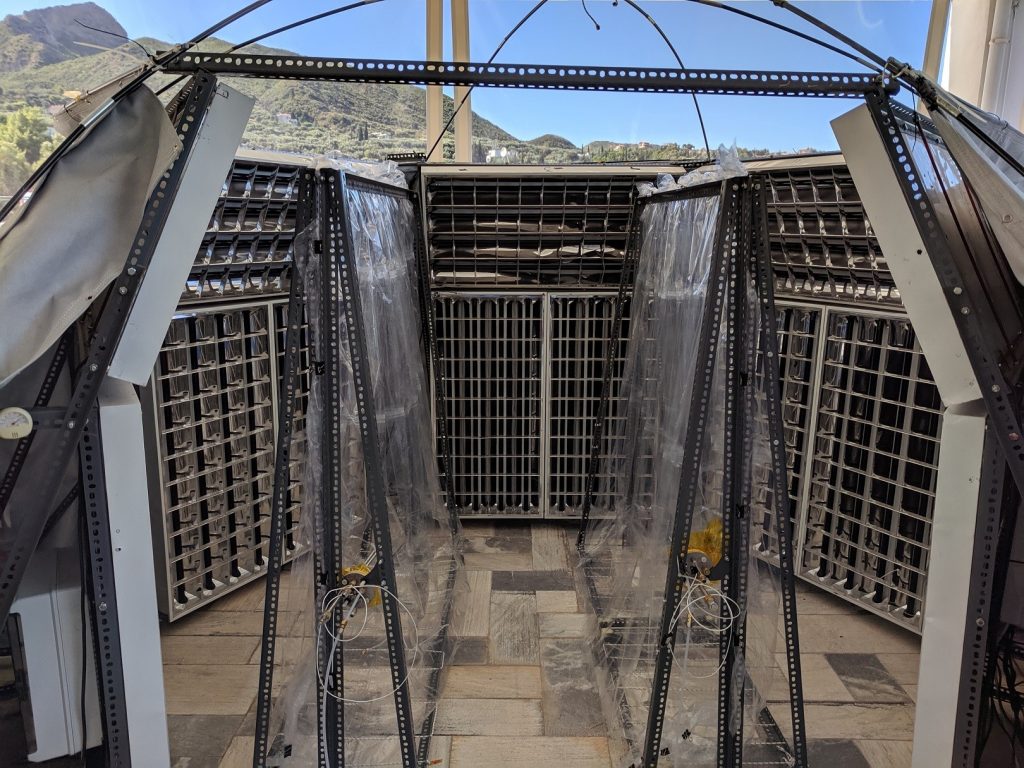
Website | http://laqs2.iceht.forth.gr/research-facilities/experimental-facilities/laboratories |
Legal name of organization operating the infrastructure | Foundation for Research and Technology Hellas, Institute of Chemical Engineering Sciences (FORTH/ICEHT) |
Description of the infrastructure | |
Brief general description of the infrastructure to which access is offered | The portable dual-smog-chamber system uses two identical pillow-shaped smog chambers (1.5 m3 each). The two chambers are surrounded by sixty UV light lamps (Osram, L36W/73) in a hexagonal arrangement. The lamps are mounted on five metal frames (12 per frame) creating five substructures. The sixth side does not include lights and is used as an entrance for chamber maintenance. The lights can be remotely operated at 20 %, 40 %, 60 %, 80 %, and 100 % levels. The light fixtures include aluminum mirrors in order to direct the light towards the center of the dome, thus maximizing the light intensity delivered to the chambers. When all lights are on, the corresponding JNO2 is 0.1 min−1. The spectrum of the lights peaks in the 350–400 nm region. Flexible tent poles were used to create a dome that can be partially or fully covered protecting the chambers from the weather elements. Once the dome is removed, it can also be used with natural sunlight. The relatively small volume of the chambers along with the fixed frame enables their easy and safe transport without having to disassemble them or to remove the sampling ports. Relative humidity (RH) and temperature sensors are also fixed on the chambers. The frame dimensions are 1.7m×0.5m×1.7 m. Two sampling ports (one per chamber) with multiple lines and a temperature and RH sensor were installed on the reactors. Sampling is alternated between the two chambers every 3 min by an automated three-way valve synchronized with the operation of the corresponding instrumentation. This allows a total duration of the experiments of more than 4 h without the addition of makeup air. This design also allows the use of a single 10 m3 chamber if so desired. |
Services currently offered by the infrastructure and its research environment | – Atmospheric “perturbation” experiments. |
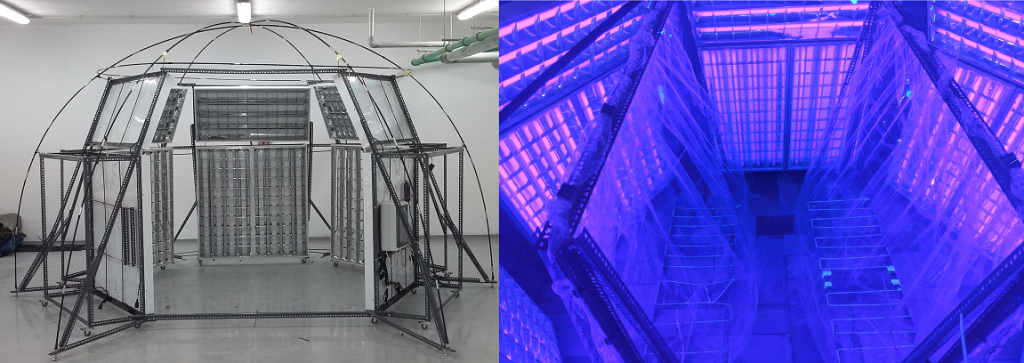
Typical duration of work | Between 2 and 4 weeks. A typical campaign includes 2-3 days of preparing the chambers for the experiments (e.g. connection of external instruments, testing), then 10-15 days of experiments (one experiment per day) and finally 5-6 days of data sharing and preliminary analysis and planning of the rest of the analysis and synthesis. |
Community/user type served | The FORTH-MSC has been used until now mainly by the academic sector. However, it is available for both the private sector and government. |
Logistic and administrative support offered | Assistance with transport and installation of additional instrumentation to the site is offered. Troubleshooting and repairs can be provided. The institute offers assistance by providing local accommodations. |
Physical description | The frame dimensions are 1.7m×0.5m×1.7 m. Once assembled the UV light support structure had a footprint of 4.5 m×4.5 m and a height of 2.5 m Each chamber has a nominal volume of 1.5 m3. The lights can be remotely operated at 20 %, 40 %, 60 %, 80 %, and 100 % levels. When all lights are on, the corresponding JNO2 is 0.1 min−1. The spectrum of the lights peaks in the 350–400 nm region. UV lights heat to approximately 50 ∘C. A dual-head metal bellows pump (model MB-602) is used to fill the chambers with ambient air delivering 80 L min−1 per pump head. |
Person in charge of access provision at the infrastructure | Dr. Spyros Pandis, spyros@chemeng.upatras.gr |
Description papers |
Information about the FORTH-MSC can be found in the following publications: – Kaltsonoudis, C., Jorga, S. D., Louvaris, E., Florou, K., and Pandis, S. N.: A portable dual-smog-chamber system for atmospheric aerosol field studies, Atmos. Meas. Tech., 12, 2733–2743, https://doi.org/10.5194/amt-12-2733-2019, 2019. – Jorga, S. D., Kaltsonoudis, C., Liangou, A., and Pandis, S. N.: Measurement of formation rates of secondary aerosol in the ambient urban atmosphere using a dual smog chamber system, Environ. Sci. Technol. 54, 1336–1343, https://doi.org/10.1021/acs.est.9b03479, 2020. |
The main laboratory of LAQS is located at the Institute of Chemical Engineering (ICE/FORTH) around 1 km away from the University of Patras. The main scientific objectives of the laboratory are to study the physical and chemical properties of atmospheric particles and gases, related to atmospheric pollution. The laboratory is equipped with a variety of instrumentation appropriate for the measurement of chemical composition, the mass concentration, size, volatility, water solubility, hygroscopicity of atmospheric particles and the monitoring of certain gases. A series of controlled (in a smog chamber) and uncontrolled (ambient) experiments and measurements are conducted in order to investigate the corresponding atmospheric processes. Current studies are focusing on:
- The investigation of emissions from wood burning and their atmospheric processing
- The properties of biogenic and anthropogenic pollutants and their oxidation products
- Oxidation mechanisms of gaseous species and secondary organic aerosol formation and aging
- Evaluation of photochemical mechanisms
- Exploration of chemical composition, gas/particle partitioning, hygroscopicity and volatility of SOA
- Formation and growth of nanoparticles
Volatility Measurements with Thermodenuder
The Thermodenuder is an instrument used for the measurement of the volatility of atmospheric aerosol coupled with a High-Resolution Aerosol Mass Spectrometer (HR AMS) and/or a Scanning Mobility Mass Spectrometer (SMPS). Details about the design and the performance of our Thermodenuder can be found in An et al. (2007).

(An W. J., R. K. Pathak, B. H. Lee, and S. N. Pandis (2007): Aerosol volatility measurement using an improved thermodenuder: Application to secondary organic aerosol, J. Aeros. Sci., 38, 305-314)
Temperature-controlled laminar flow reactor
The reactor is a 4 m long tube consisting of 2 concentric cylinders. Water with the desired temperature circulates in the cylindrical annulus. The aerosol used in the experiment flows along the inner cylinder. There are five sampling ports along the reactor. The reactor is used for aerosol growth and evaporation experiments.
This laboratory is located in the Chemical Engineering Department of the University of Patras. It is used for analysis of filter samples collected throughout the various sampling sites. GC-MS analysis for the characterization of the organic compounds of the aerosols and Thermal Optical Analysis for the characterization of the Organic (OC) and Elemental Carbon (EC) are performed there.
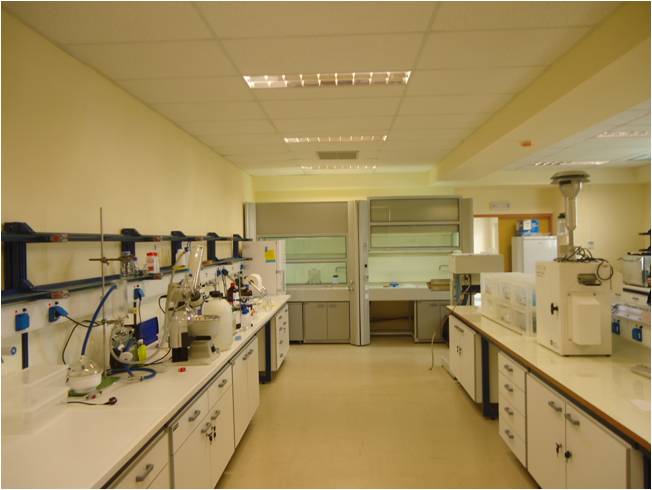
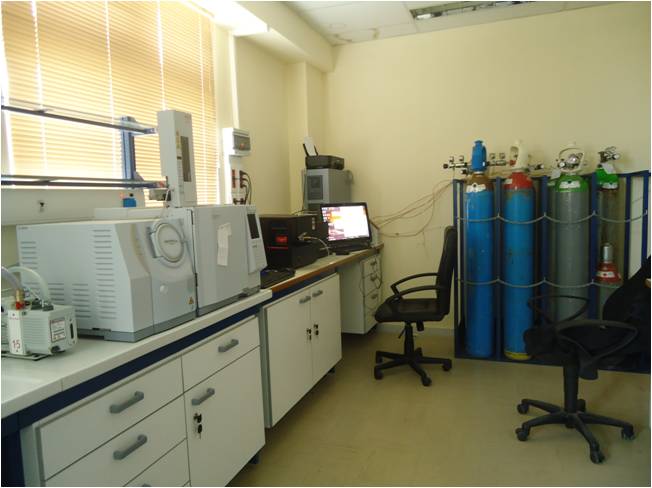
LAQS has developed and commissioned a Mobile Laboratory (Mercedes-Benz Sprinter light duty van) for air quality monitoring and field experiments using mobile smog chambers. The laboratory has a flexible design allowing the use of different instrumentation depending on the measurement objectives.
The LAQS Mobile Lab is equipped with a number of monitors for gas-phase (CO, NO, NO2, O3, SO2, Volatile Organic Compounds using a PTR-MS) and particle-phase (size distribution, mass/composition distribution using an Aerosol Mass Spectrometer, black carbon) pollutants and their properties (scattering, absorption, volatility).
It can be used as fixed monitoring station, a mobile measurement platform or as an actual mobile laboratory allowing performance of smog chamber experiments in the field using ambient air.
